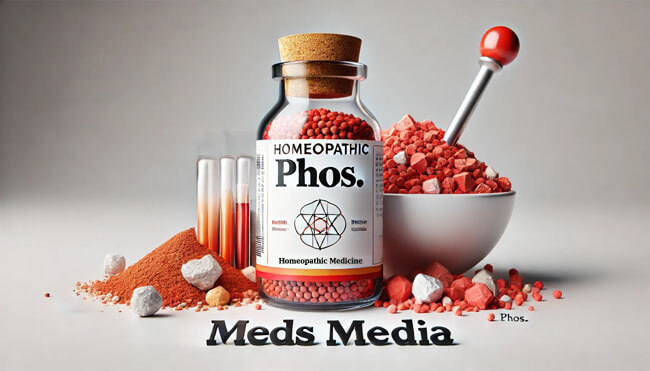Symphytum officinale, commonly known as comfrey, is a herbaceous perennial plant that has been used in traditional medicine for centuries. In homeopathy, Symphytum officinale is a well-known remedy that is primarily used for its healing properties, particularly in relation to bone injuries and fractures.
Properties and Preparation:
Symphytum officinale is prepared as a homeopathic remedy from the fresh root of the plant.
The remedy is typically available in various potencies (such as 6C, 30C, 200C, 1M, 10M) and can be found in the form of tablets, pellets, or liquid dilutions.
It is primarily indicated for injuries to bones, periosteum (the layer surrounding the bones), and tendons.
Symptoms treatment and materia medica:
Symphytum officinale is known to stimulate the healing process in bone injuries and fractures.
It helps in reducing pain, promoting callus formation, and accelerating the knitting of bones.
The remedy is also indicated for injuries to the periosteum, tendons, and ligaments.
It may be useful in cases of old, non-healing fractures and injuries that tend to ulcerate.
Bone injuries and fractures that are slow to heal or fail to heal properly.
Pain in old fractures, especially after the bone has knit together.
Painful, sharp, shooting pain in the injured area.
Sensation of soreness and bruising in the bones.
Pain that is worse at night and during damp weather.
Tendency for the injury to develop an ulcer or refuse to heal.
Injuries to the eyes, such as blows or contusions.
Injuries to the periosteum (covering of the bones) with sharp pain.
Painful conditions of the joints, especially after an injury.
Trauma to the dental nerves, resulting in pain and sensitivity.
Injuries to the spinal cord or coccyx with lingering pain.
Painful conditions of the ribs, sternum, and long bones.
Bone pain in cancer patients.
Pain in the long bones, as if they are being gnawed or crushed.
Numbness and tingling in the affected area after an injury.
Frequently Asked Questions (FAQ):
Q: Is Symphytum officinale only used for bone injuries?
A: While it is primarily indicated for bone injuries and fractures, it can also be helpful in other conditions such as dental nerve trauma, joint pain, and injuries to the periosteum.
Q: Can Symphytum officinale be used for fresh fractures?
A: Yes, it can be used for fresh fractures as it promotes the healing process and reduces pain.
Q: Is Symphytum officinale safe to use?
A: When used in homeopathic dilutions, Symphytum officinale is considered safe. However, it is always advisable to consult a qualified homeopathic practitioner for proper guidance.
Q: Can Symphytum officinale be used alongside other medications?
A: Homeopathic remedies can generally be used alongside conventional medications. However, it is recommended to consult a healthcare professional for personalized advice.
Q: How often should Symphytum officinale be taken?
A: The frequency and dosage of the remedy depend on the individual case and severity of symptoms. It is best to consult a homeopathic practitioner for appropriate dosing instructions.
Q: Are there any side effects of Symphytum officinale?
A: When used in homeopathic pot encies, Symphytum officinale is generally considered safe and does not typically cause side effects. However, it is always recommended to use homeopathic remedies under the guidance of a trained practitioner to ensure proper usage.
Q: Can Symphytum officinale be used during pregnancy and breastfeeding?
A: It is generally advised to consult a homeopathic practitioner before using any remedies during pregnancy and breastfeeding to ensure their safety and appropriateness for the individual situation.
Books References:
- Synoptic Key to the Materia Medica” by Cyrus Maxwell Boger
- The Materia Medica of the Nosodes” by Henry Clay Allen
- The Materia Medica and Repertory” by William Boericke
- A Manual of Homeopathic Materia Medica” by William Boericke
- The Complete Homeopathy Handbook” by Miranda Castro
These book references provide detailed information on homeopathy, including Symphytum officinale, and can be helpful resources for further study and understanding of the remedy.
Please note that the information provided here is for informational purposes only and should not replace professional medical advice. It is always recommended to consult qualified homeopathic doctors for proper diagnosis, guidance, and individualized effective homeopathy treatment.
Similar Posts
Zincum Picricum Homeopathic Medicine & Personality | Uses, Benefits & Indications
Zincum Phosphoricum Homeopathic Medicine & Personality | Uses, Benefits & Indications
Zincum Iodatum Homeopathic Medicine & Personality | Uses, Benefits & Indications
Zincum Bromatum Homeopathic Medicine & Personality | Uses, Benefits & Indications
Zea Homeopathic Medicine & Personality | Uses, Benefits & Indications
Zincum Aceticum Homeopathic Medicine & Personality | Uses, Benefits & Indications
Zincum Cyanatum Homeopathic Medicine & Personality | Uses, Benefits & Indications
Zincum Muriaticum Homeopathic Medicine & Personality | Uses, Benefits & Indications
Zincum Oxydatum Homeopathic Medicine & Personality | Uses, Benefits & Indications
Zincum Sulphuricum Homeopathic Medicine & Personality | Uses, Benefits & Indications

Phosphorus Homeopathic Medicine & Personality | Uses, Benefits & Indications
Causticum Homeopathic Medicine & Personality | Uses, Benefits & Indications

Top Global Homeopathic Medicine Manufacturers

Top renowned Homeopathic research institutes worldwide


